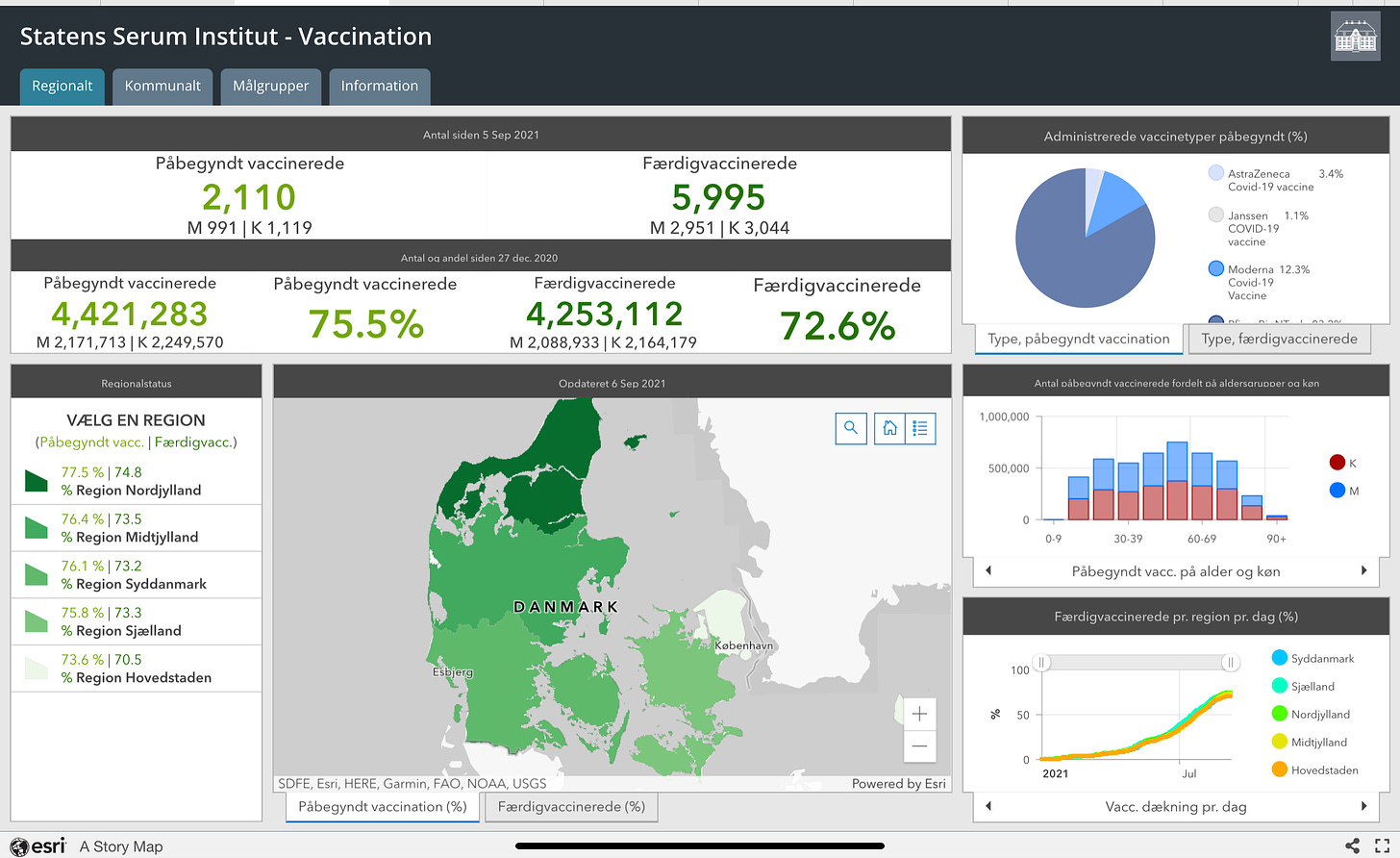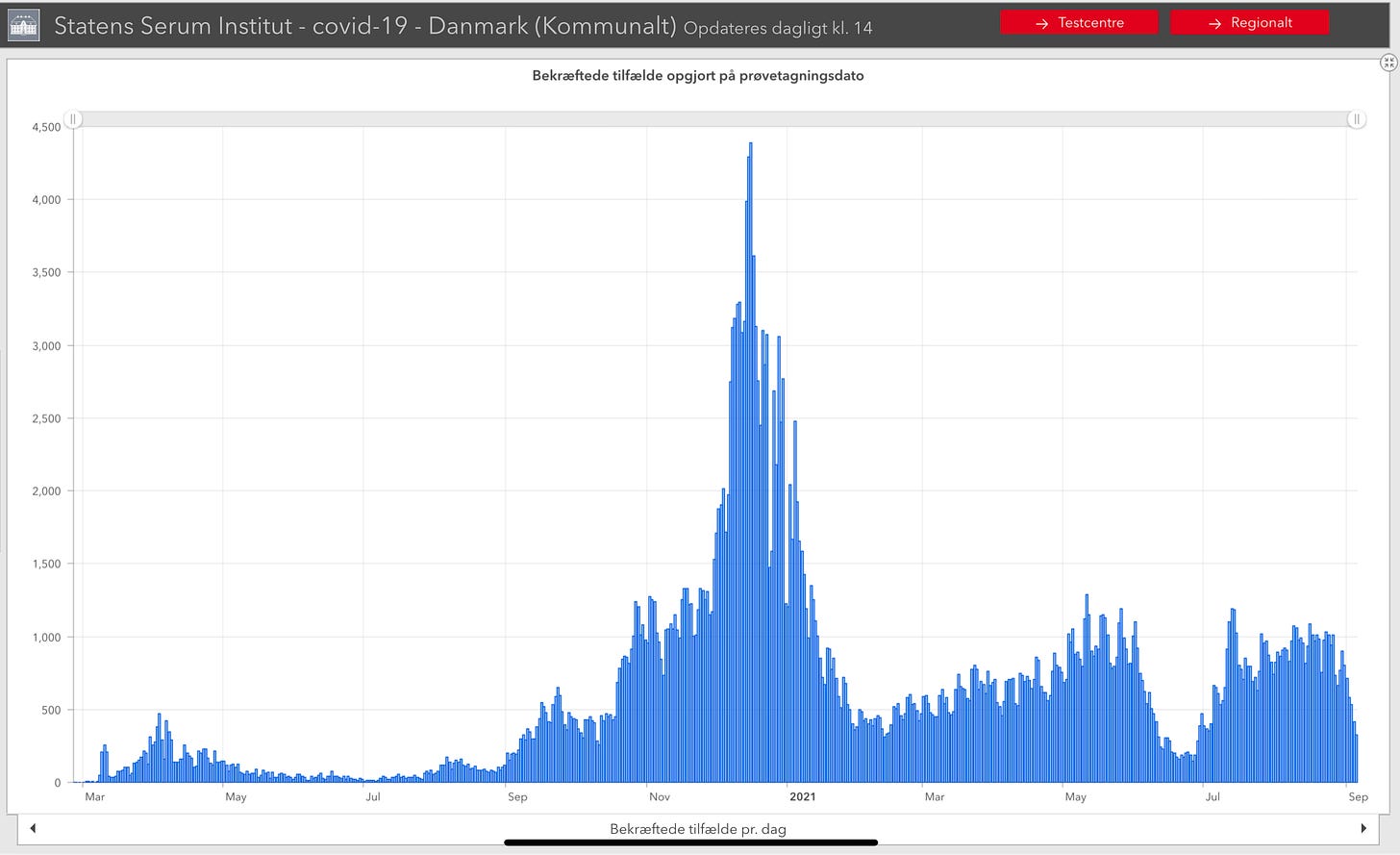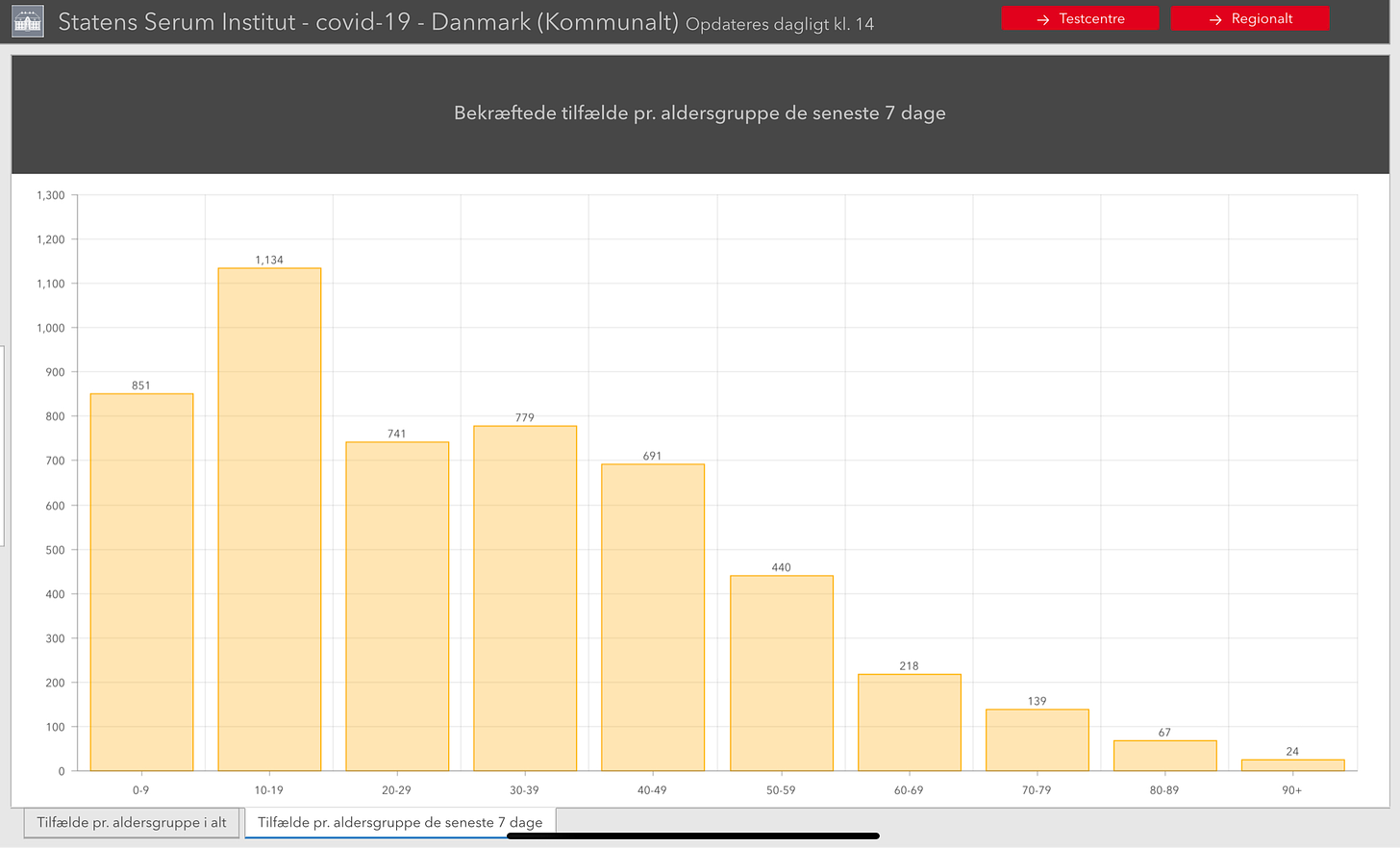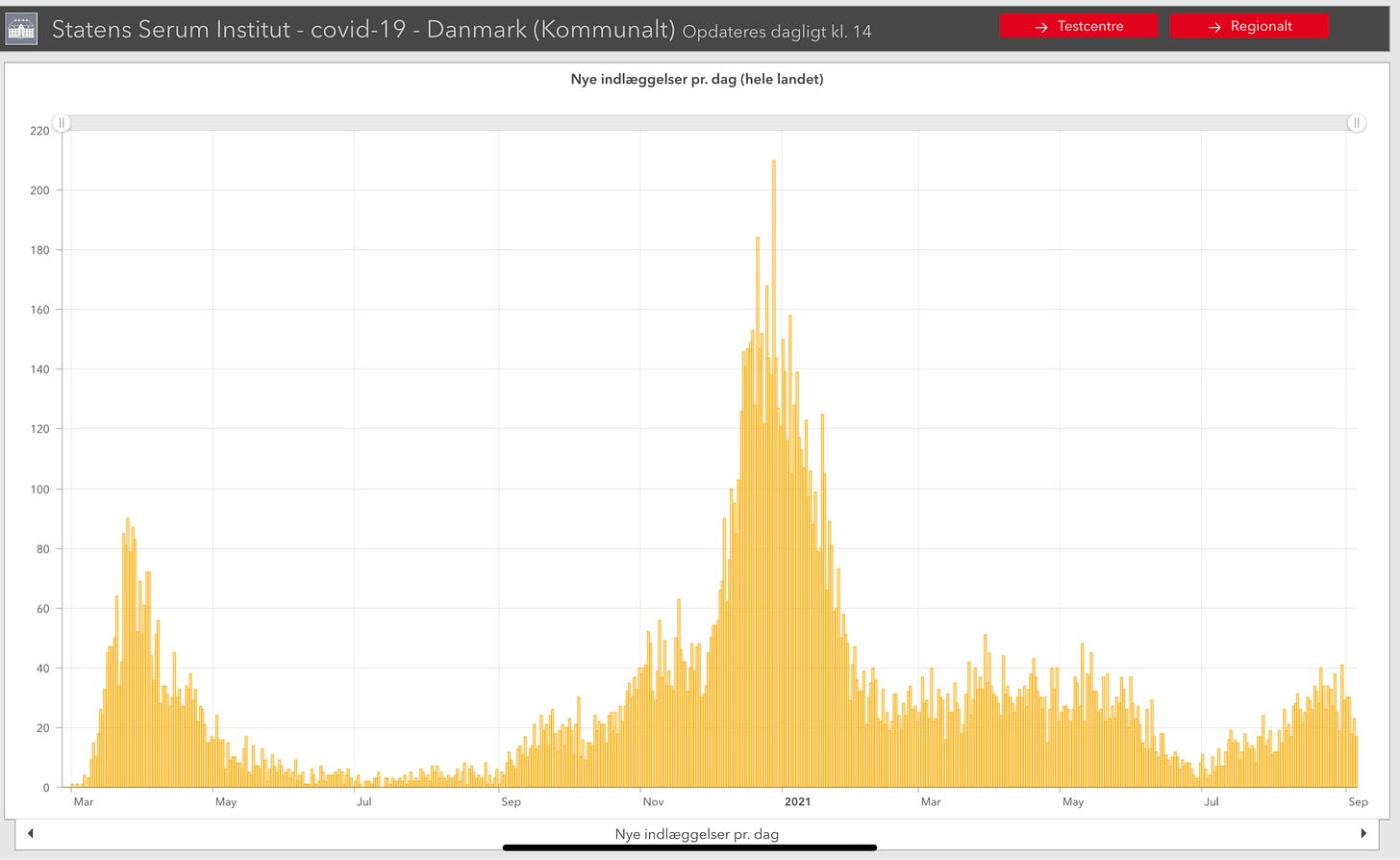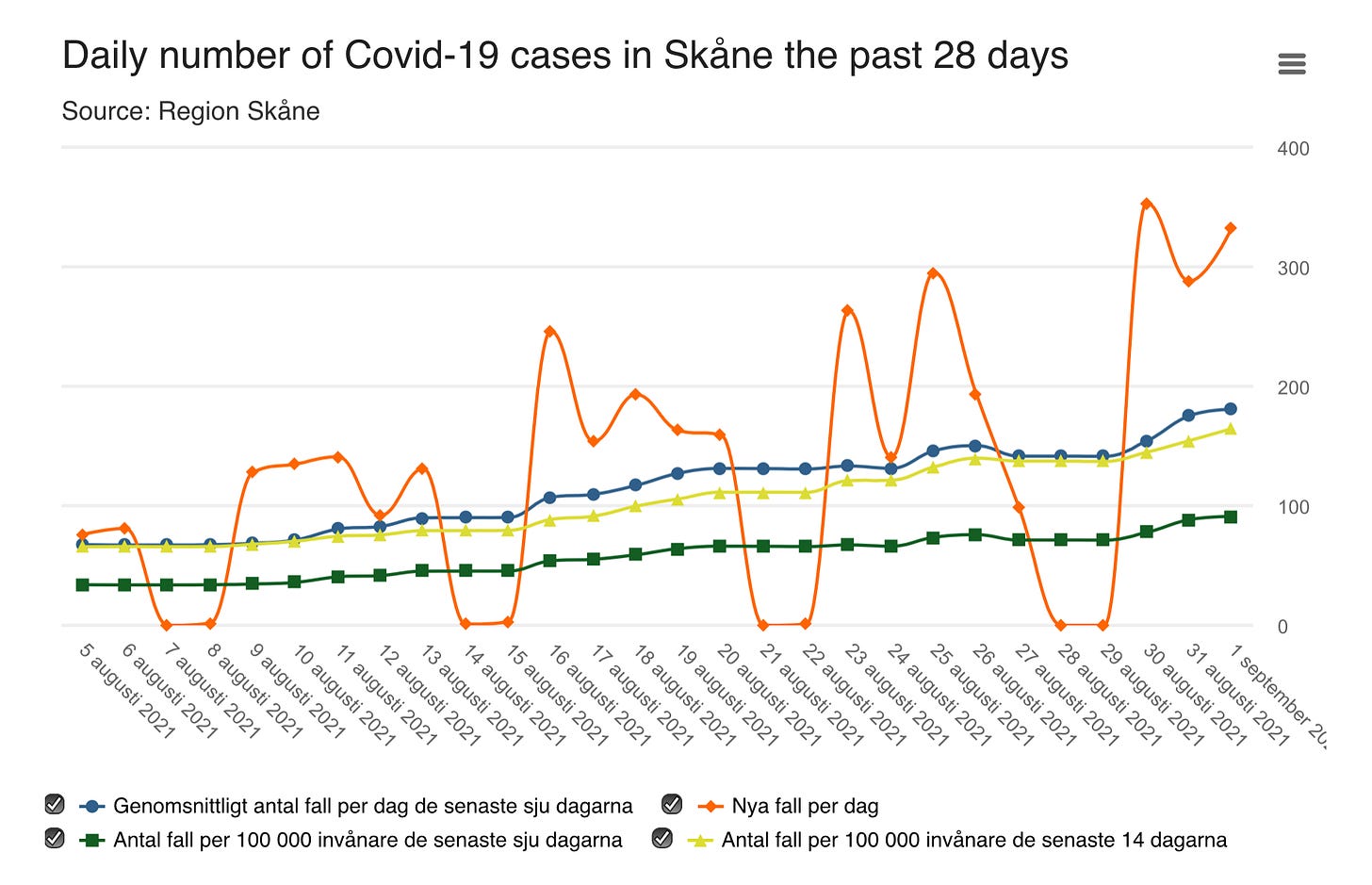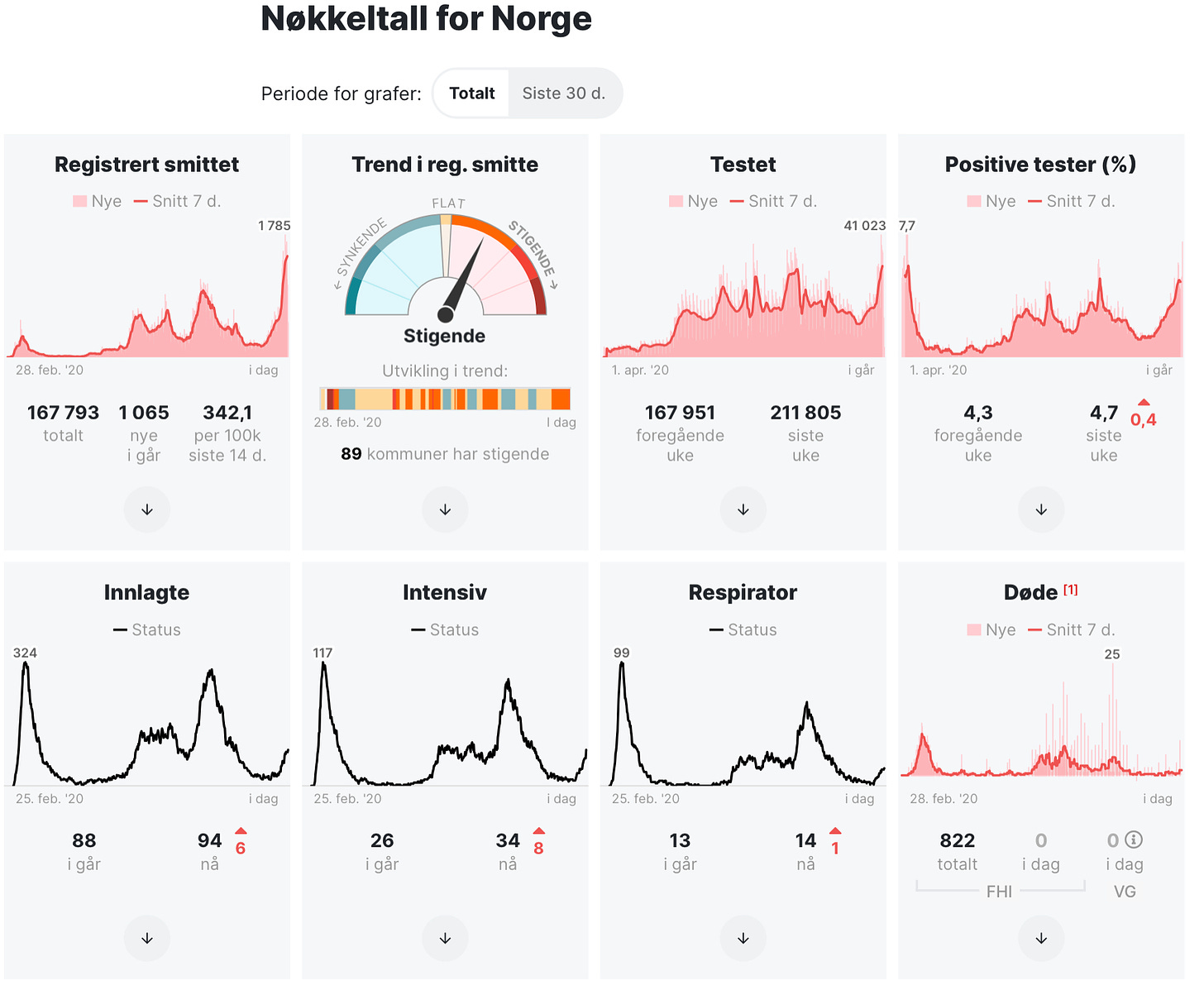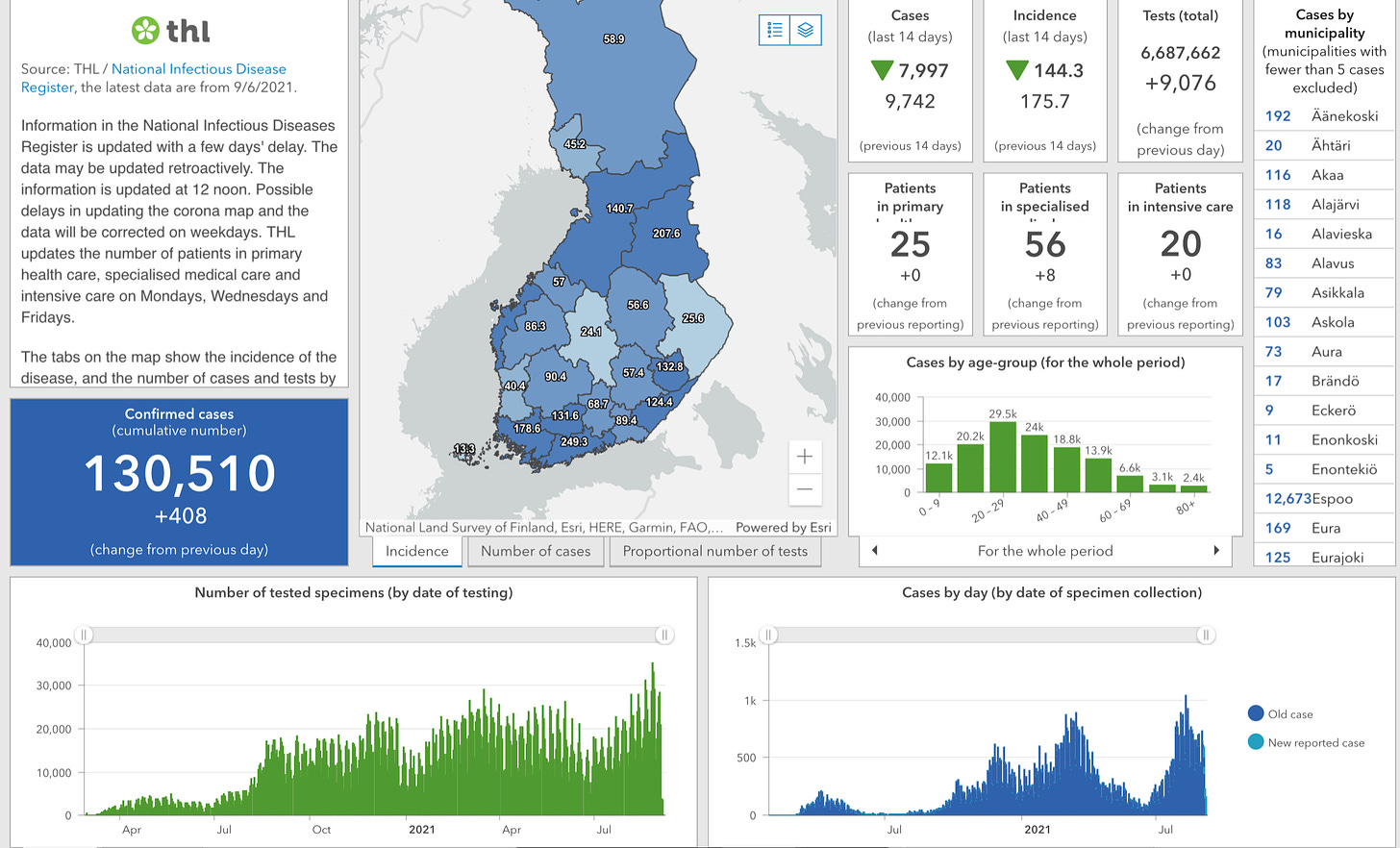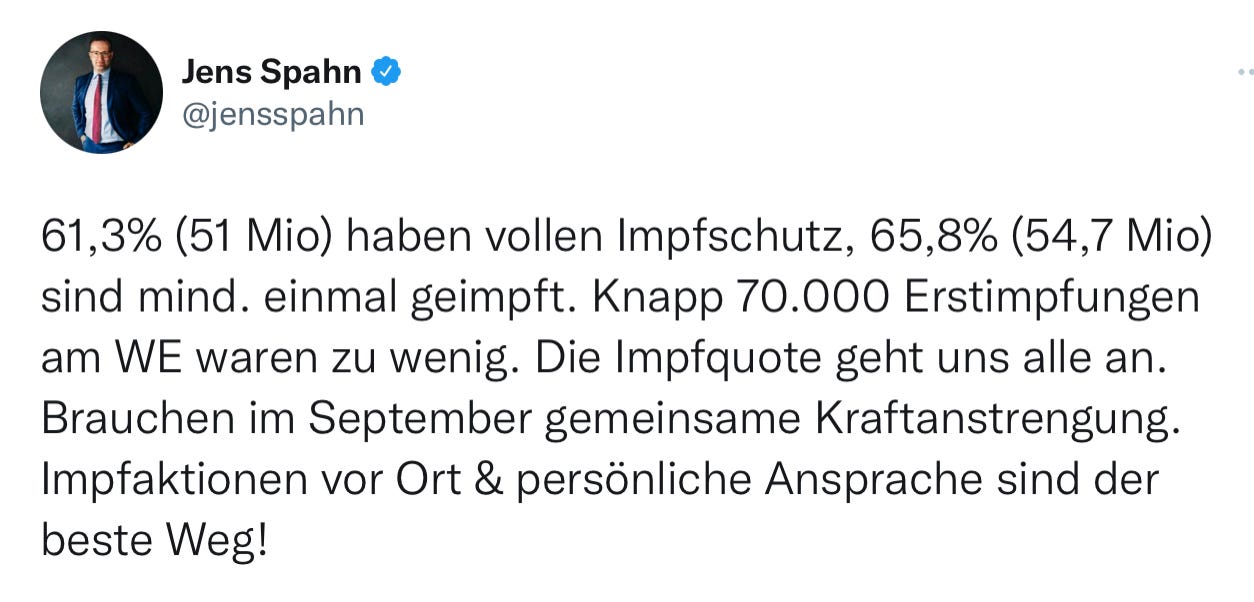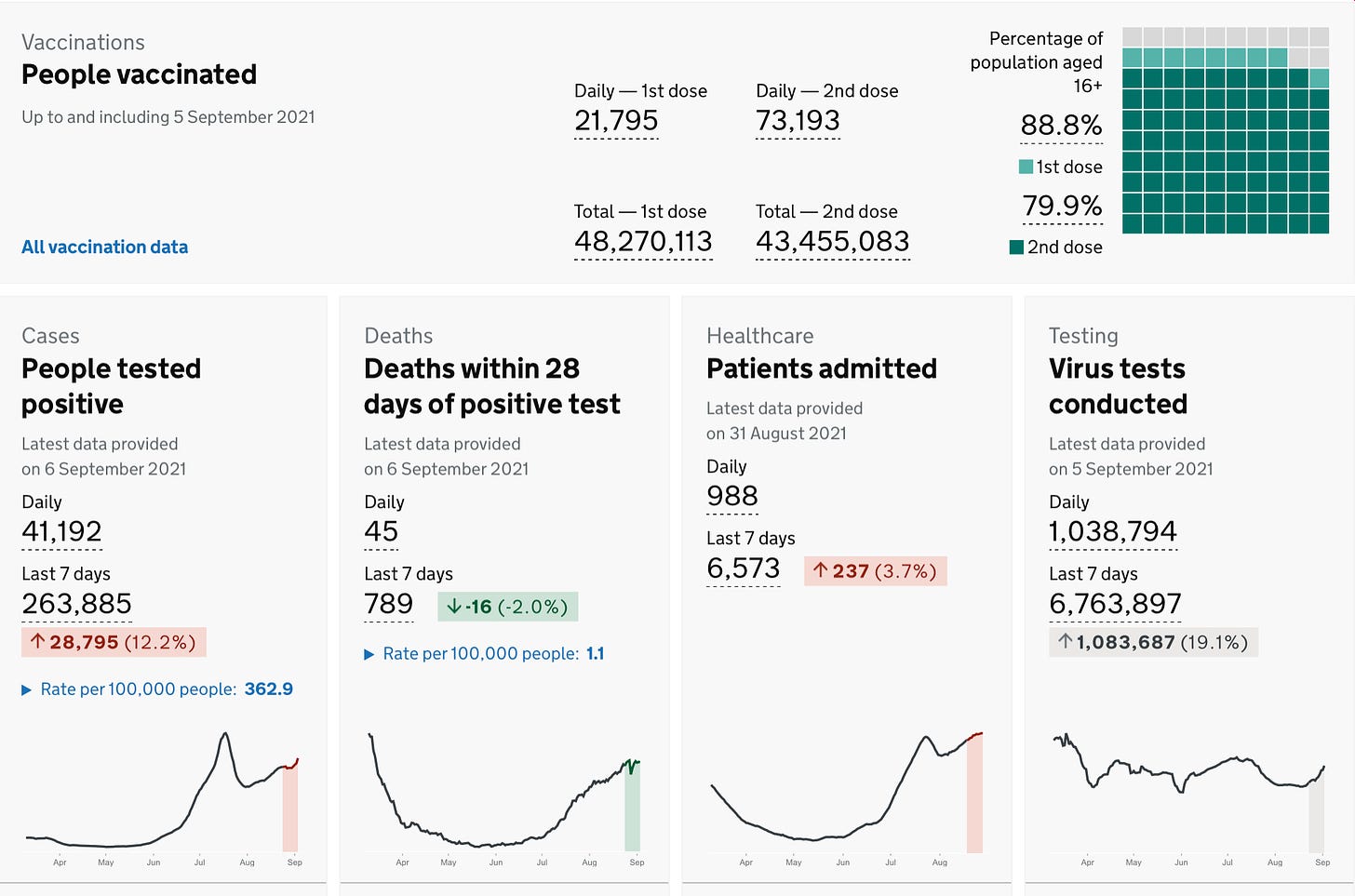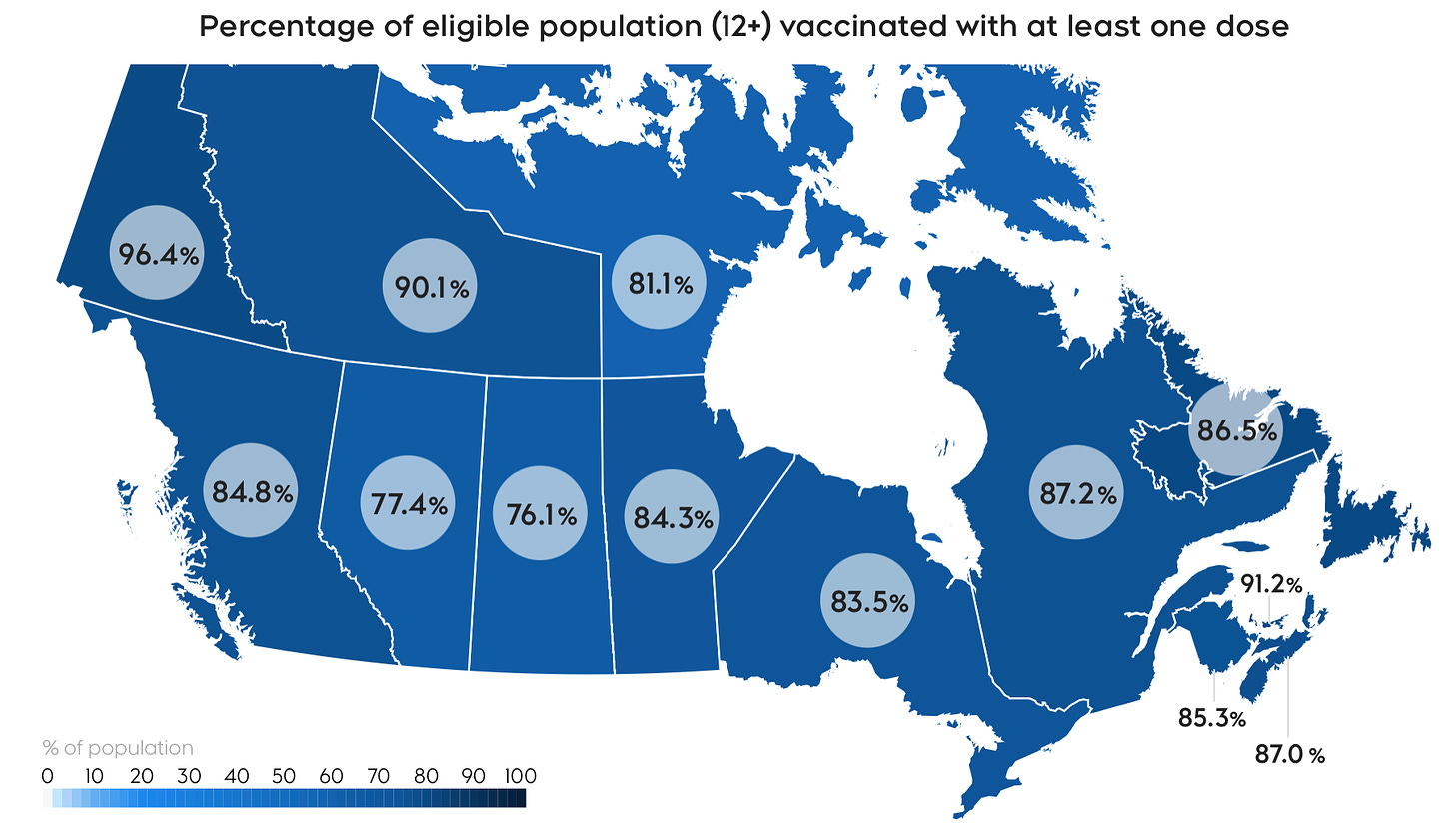🇩🇰
The Danish National Board of Health has updated its COVID guidelines for schools. From now on, only a child who has tested positive will be sent home to be isolated. Children considered close contacts can remain in class unless they have symptoms or test positive themselves.
Deputy Director Helene Probst says they are trying to strike a balance between keeping kids safe and minimizing impacts to schools and classrooms.
“There have been too many interruptions for many children and young people during the pandemic. I am glad that with the new guidelines we strike a balance where we rely more on testing, where children can stay in school even if they are in close contact. There is no doubt that the many school and daycare closures have had consequences, both for the children, but also for the parents, who have had to stay home from work.”
Children considered close contacts of an infected student or teacher will now take several COVID tests. Children under three years old do not need to be tested unless they have symptoms.
The health board says children and school staff who have symptoms must stay home. It says this will help reduce infection spread, and not just for coronavirus.
“It is crucial that they stay home when they are ill. We already see more children who have colds and other infectious diseases such as the RS virus, and you risk infecting the whole room or class if you do not keep your child at home.”
A “Clean Routine’ campaign has also been launched to encourage good hygiene habits in schools and daycares.
Guidelines explained:
Child considered a close contact who has NOT been fully vaccinated or previously infected in the last 12 months.
Child can stay in school or daycare as long as they have no symptoms.
A COVID test as soon as possible (either PCR or rapid).
PCR tests again on day four and on day six after last contact.
Child must isolate immediately after a positive test.
Child 12 years old and older considered a close contact who are either fully vaccinated or have been previously infected in the last 12 months.
Child can stay in school or daycare as long as they have no symptoms
PCR tests on day four and day six after last contact
Child must isolate immediately after a positive test.
Children considered a close contact who are three years old and younger
COVID testing not required unless they exhibit symptoms
May remain in daycare as long as they are not symptomatic.
Child must isolate immediately after a positive test.
The Skolelederforeningen, the Union representing school staff, is cautiously optimistic about the changes announced today. But they say for it to truly work, then access to testing must be made much easier for staff and students.
Chair Claus Hjortdal says COVID testing must be done in schools.
“A number of test sites have been moved away from schools. Now the municipalities and the health authorities must enter into a dialogue about how to solve some issues with this new situation, so that the students do not have to leave the school to be tested.”
Hjortdal notes the health board did not specify in the changes made today where testing will take place. He says the outside of this issue, this is a good step towards easing the burden on school staff, who do a lot of work contacting parents, tracking close contacts, and infected students, as well as a multitude of other COVID-related logistics.
-
The Children and Education Ministry has expanded weekly coronavirus testing efforts from those 12 to 15 years old who are unvaccinated to children as young as nine.
The ministry, in announcing the news in a late Monday night press release, says:
“With the more contagious Delta variant, health authorities expect children and adolescents to account for an increasing proportion of new COVID cases this school year, especially among non-vaccinated school children.”
The ministry says that expanded testing can help mitigate infection spread. The change takes immediate effect.
Minister Pernille Rosenkrantz-Theil:
“A comprehensive epidemic among school children will have an impact on schools' ability to complete their teaching. In order for students to have as normal a schooling, with as few repatriations as possible in the autumn, we need to delay the spread of infection. Here, screening tests of unvaccinated children between the ages of 9 and 11 are a good tool.”
The ministry says it is working with the kommunes to increase testing capacity at schools to meet this new demand.
Currently, unvaccinated children, school, and daycare staff are encouraged to get COVID tested twice a week. As of October 1, the testing mandate will be reduced to once a week.
Health Minister Magnus Heunicke:
“Screening tests of the 9 to 11-year-olds will make a difference to our epidemic control. The children are not part of the vaccination program, and as children will represent an increasing proportion of newly infected and are more asymptomatic, it is an important group to keep an eye on, among other things, to protect vulnerable citizens.”
To date, 59% of 12 to 15 year olds have had one vaccination dose. The ministry estimates the number of children under the age of 12 who cannot be vaccinated numbers some 740,000 children.
-
Groceries, toys, clothes, and vaccines? Pop-up vaccination sites will soon show up in select Fotex and Bilka stores beginning September 11. The Danish National Health Board says this is an effort to bring businesses and different organizations onboard the vaccination campaign.
Sundhedsstyrelsen Director Søren Brostrøm says they want to “turbocharge” the vaccination effort to reach remaining vaccine hold-outs.
“We want to ensure that vaccination opportunities are as accessible as possible, so that, for example, it is possible to get a shot, while grocery shopping or doing other daily tasks. At the same time, the retail trade has a large number of young employees, and here the industry can help to give young people the information they need to make their choices about getting vaccinated. Among other things, this may be informing them that you no longer have to book an appointment to get vaccinated.”
It isn’t just Fotex and Bilka, as the health board says DGI, the Danish Sports Confederation, and industry groups like SMV Denmark have also signed on to the effort. While making vaccinations more available to the public, this strategy also seeks to have businesses, companies, and organizations take the vaccination message directly to their employees and members.
The Danish vaccination campaign is in what it is calling “the final sprint” to reach the last hold-outs, and especially young people aged 20 to 29 years old. That age group has the lowest rate of vaccination uptake.
-
On the vaccination front, things remain sluggish with just 8,105 inoculations yesterday and of those only 2,110 were 1st doses.
So far, 75.5% of the total population has had one vaccine dose and 72.6% are fully vaccinated.
Denmark’s Sundhedsstyrelsen is convinced the country can reach the goal of having 90% of the eligible population, those 12 years old and up, vaccinated by October 1. The health board says 86% of those 12 years old and older have been vaccinated, leaving just four percentage points to go.
Unit Manager Niels Sandø spoke to DR:
“It is clear that it is going slower now, but we are completely convinced that the chances are high that we will reach 90% of those invited.”
-
Denmark is reporting 461 COVID infections and two more coronavirus deaths in the last day, as numbers continue on a gradual downward trend.
Yesterday, there were 77,677 total corona tests done, 40,149 PCR and 37,528 rapid, for a (PCR only) positivity percentage of 1.14%.
-
Over the last week, new infections remain mostly concentrated in those under the age of 50 and especially among kids 19 years old and younger who had the most infections last week of any age group.
-
The number of Danish kommunes with a COVID incidence rate over 100 per 100,000 residents has dropped to 18. Of those municipalities seven have incidence rates over 200.
-
COVID hospitalizations (125) have inched upward (+1) and the number of infected people in an ICU (26) is unchanged day to day while of those the number on a ventilator (18) edged up (+1).
-
Health experts in Denmark are warning parents to take matters seriously if small children have cold and flu symptoms and also struggle to breathe.
There are a number of infants and toddlers who are currently hospitalized in Denmark with the RS virus, seven in Herning alone, according to TV2.
Chief Physician Christina Hølledig Christensen told TV2 parents must keep their children at home if they have RS virus symptoms, which can include a runny nose, cough, and fever.
“I think this is something we should take seriously. People say it's just a cold, and it may be for older children, but not for the little ones.”
Infants and toddlers who have serious cases of the RS virus requiring hospitalization can require help breathing, be fed by an IV, and may have to have mucus sucked out of their lungs.
Denmark is seeing an “extraordinary” number of RS virus infections, 520 cases just last week, as the country sees cases in numbers far higher and much earlier than seen before.
🇸🇪
Radio Sweden is reporting that frustrated parents of young children who have been infected and are now battling long-COVID are looking elsewhere in Europe to get their children vaccinated. Sweden is one of only a few EU nations that does not vaccinate children 12 to 15 years of age.
The station spoke to a Swedish mother named Jenny, whose daughter has been battling long-COVID for a year and a half. She has missed half of all school lessons during that time. Jenny and other parents have been sharing information on which European countries offer vaccines to tourists. She plans on taking her daughter to Croatia to get her vaccinated.
“When your child has been ill for a year and a half, you are prepared to do everything to avoid it from happening again.”
Radio Sweden spoke to Sweden’s Chief Epidemiologist Anders Tegnell, who expressed surprise that parents would take that step. Tegnell insists there is not enough data to make the decision on vaccinating younger children.
Many countries across Europe including Finland, Denmark, and Germany among others outside the EU like the United States and Canada have been vaccinating children as young as 12 for weeks. The European Medicines Agency has approved not one but two vaccines in Europe, Pfizer and Moderna, for use on children as young as 12.
Some studies have found that vaccination can in some cases provide relief to those suffering from long-COVID.
-
The Swedish National Legislature is removing COVID restrictions that have kept many of its 349 members at home. In order to facilitate votes and abide by social distancing to minimize infection risk, the number of members in the house was reduced to 55. Now a new agreement has been reached and all 349 members can take a seat when the Riksdag resumes sitting on September 14.
President Andreas Norlén spoke to TT and said there will still be some flexibility, for example, to use different larger rooms for committee work, et cetera. However, he also added that they cannot mandate elected officials to be fully vaccinated.
“We have no formal opportunities to make such a demand; the members are elected by the people and have the right to participate in the work of the Riksdag, regardless of whether they are vaccinated or not. But I assume that all members get vaccinated, unless there are medical reasons.”
-
In Southern Sweden, Region Skåne continues to wrestle with its latest infection curve.
🇳🇴
Norway added 1,029 infections and had no new corona deaths since yesterday’s update.
COVID hospitalizations (94) are up (+6) while the number of people in an ICU (34) also increased (+8) of those, the number on a ventilator (14) edged up (+1).
So far, 72.55% of Norwegians have had one vaccine dose and 61.10% have had both shots.
-
Norway stands by cross-vaccinations, when someone has been fully vaccinated using two different vaccine doses. The Norwegian Ministry of Health says all current studies support the effectiveness of cross-vaccination and what matters is getting as many people in Norway vaccinated as soon as possible. The ministry cites Canada as cross-vaccinating on a large scale, just like Norway.
The health ministry says it is aware some countries like the USA and the United Kingdom do not recognize someone as being fully vaccinated unless they have two doses of the same vaccine. This has been a problem for some travelers headed to destinations in the EU and outside of it.
Norway’s Health Minister Bent Høie says he is in discussions with the UK and the EU to get people who are cross-vaccinated recognized as being officially fully vaccinated.
🇫🇮
Finland has registered 408 infections in the last 24 hours.
To date, 4,052,766 1st vaccine doses (72.4% of the population) have been administered while 2,966,881 people (53.2%) are fully vaccinated.
-
The Finnish Government has tabled a new COVID hybrid strategy today that takes the focus off of testing, contact tracing, and quarantines and moves it to vaccinations, a vaccine passport, and more localized control on COVID response.
Prime Minister Sanna Marin spoke to reporters today, as reported by YLE, and said a vaccine passport could get parliamentary approval by mid-September.
"We will open society and keep it open. We ensured that the [new strategy's] various measures would affect people's lives as little as possible economically, socially and [in terms of their] well-being. When we reach 80 percent vaccine coverage, we can lift the restrictions.”
Marin stressed that contact tracing efforts had led to staffing shortages across the health care sector.
Currently, bars, restaurants, and cafes are operating under a number of COVID restrictions, which will be lifted before the 80% vaccination mark, according to the Prime Minister.
YLE has obtained information that seems to show the Finnish Institute for Health is not onboard on the removal of restrictions and on moving the focus off of contact tracing. Today, the institute released information on where it assesses the most coronavirus risk is. It included places like bars, nightclubs, and large festivals, while it deemed infection risk to be lowest in libraries, movie theatres, on public transport, and in school classrooms.
🇪🇺💉
The European Medicines Agency has begun an “accelerated assessment” of the need for a third dose of the Pfizer/BioNTech vaccine for the general public. The agency is working with data supplied by Pfizer, which includes results from a booster dose clinical trial involving 300 fully vaccinated people. The clinical trial dosed test groups with a third shot six months after their second.
The EMA says barring any complications or additional data needed from Pfizer, they hope to have an “outcome of this evaluation” within the next few weeks.
Separately, the European pharmaceutical watchdog is also assessing data on booster shots for both Pfizer/BioNTech and Moderna on severely immunocompromised people. It says it will communicate its findings on this front “in due course.”
Last week, the EMA said it supported EU member states beginning booster shot efforts aimed at vulnerable populations and among those who are immunocompromised. But it stressed at the moment “there is no urgent need” for booster doses for the general public. It said there just wasn’t enough information to support administering third shots yet.
🇩🇪
Germany’s Health Minister Jens Spahn continues to be extremely concerned about vaccination coverage. Even the 70,000 first doses being done recently “were not enough” as Spahn says “the vaccination levels concern us all.” He is calling for a major effort this month to boost flagging vaccination numbers.
To date, 54.7 million people in Germany (65.8%) have one vaccine dose while 51 million second doses (61.3%) have been administered.
🇬🇧
The United Kingdom is close to crossing a significant vaccination milestone, with 88.8% of its population having at least one vaccine dose. This as infection numbers climb again with 41,192 new coronavirus cases and 45 more deaths reported today.
The rate of new infections and hospital admissions have both increased over the last seven days.
🇨🇦
It is a holiday Monday during the labour day weekend in Canada and the government hasn’t updated its COVID dashboard since Friday.
-
On the vaccination front so far, 28,052,066 1st vaccine doses (73.68% of the total population) while 25,666,281 people (67.41%) are now fully vaccinated.
Ontario, Alberta, B.C, Manitoba, and Nova Scotia are among provinces and territories that have not released COVID numbers today and in some cases since Friday.
Quebec reported 530 new infections today and no new corona deaths.
In Atlantic Canada, Newfoundland and Labrador is reporting a total of 15 new infections since Friday. New Brunswick has at least seven new infections after a cluster of COVID cases among a local First Nation group.
In Saskatchewan it has reported 393 new infections today, on top of 744 over the weekend. There has also been one more virus death. The province’s seven-day average number if COVID cases has hit the highest level seen yet in the pandemic.




